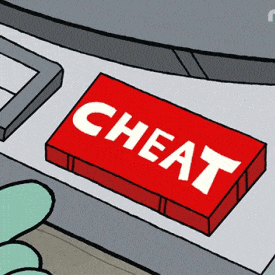Not only is it against streaming platforms rules, but it’s also cheating… If you haven’t earned the streams yourself, what’s the point?

In the competitive world of music, the idea of paying for streams might seem like a shortcut to success. It’s tempting: a boost in numbers can make you look more popular, attract industry attention, and potentially lead to bigger opportunities. However, paying for streams often causes more harm than good. Here’s why you should avoid it and focus on authentic growth instead.
1. It’s against streaming platforms’ rules
Most major streaming platforms like Spotify, Apple Music, and YouTube strictly prohibit artificially inflating streams.
- What happens if you’re caught?
- Your music could be removed from the platform.
- Your account could be suspended or banned.
- You risk damaging your reputation in the music industry.
Platforms invest heavily in detecting fake streams, so the chances of being caught are high.
2. Fake streams don’t build real fans
Paying for streams might boost your numbers temporarily, but it doesn’t create meaningful connections with listeners.
- Why it matters:
- Real fans attend your shows, buy your merch, and share your music with others.
- A high stream count with no real fan engagement looks suspicious and won’t impress labels or industry professionals.
Music is about building relationships, not just chasing numbers.
3. It hurts your credibility
If people discover you’ve paid for streams, it can damage your reputation as an artist.
- Fans might lose trust: Authenticity is key in the music world, and fake streams make you appear disingenuous.
- Industry professionals will notice: Many labels, managers, and agents can spot inflated numbers. They value genuine engagement over inflated statistics.
4. It distorts your growth metrics
Streaming numbers are more than just bragging rights—they’re valuable data that helps you understand your audience.
- With fake streams:
- You can’t tell where your real fans are located.
- You lose insight into what songs or styles resonate most with your audience.
- This makes it harder to plan tours, marketing campaigns, or future releases effectively.
5. It’s a waste of money
Paying for streams doesn’t guarantee long-term success or income.
- Here’s why:
- Platforms only pay a fraction of a cent per stream. Even with a boost, you’re unlikely to recover the money you spent.
- The money you spend on fake streams could be invested in better strategies, like advertising, high-quality production, or live performances.
What to do instead of paying for streams
1. Focus on organic growth
Promote your music authentically through social media, live performances, and collaborations with other artists. Build a loyal fanbase that genuinely loves your work.
2. Leverage playlists strategically
Submit your songs to curated playlists that align with your genre. This can expose you to new listeners who are likely to become real fans.
3. Invest in marketing
Use tools like social media ads or music promotion services to reach a targeted audience. Unlike fake streams, these methods help you connect with real people.
4. Engage with your fans
Reply to comments, thank your listeners, and involve them in your journey. Fans who feel connected to you are more likely to support your career.
Paying for music streams might seem like a quick fix, but it comes with serious risks and no real rewards. The music industry values authenticity, and building genuine relationships with your audience is far more valuable than inflated numbers.
Instead of taking shortcuts, focus on creating great music, engaging with your fans, and using honest strategies to grow your audience. True success comes from connecting with people who love your work—not from artificially boosting your stats.



